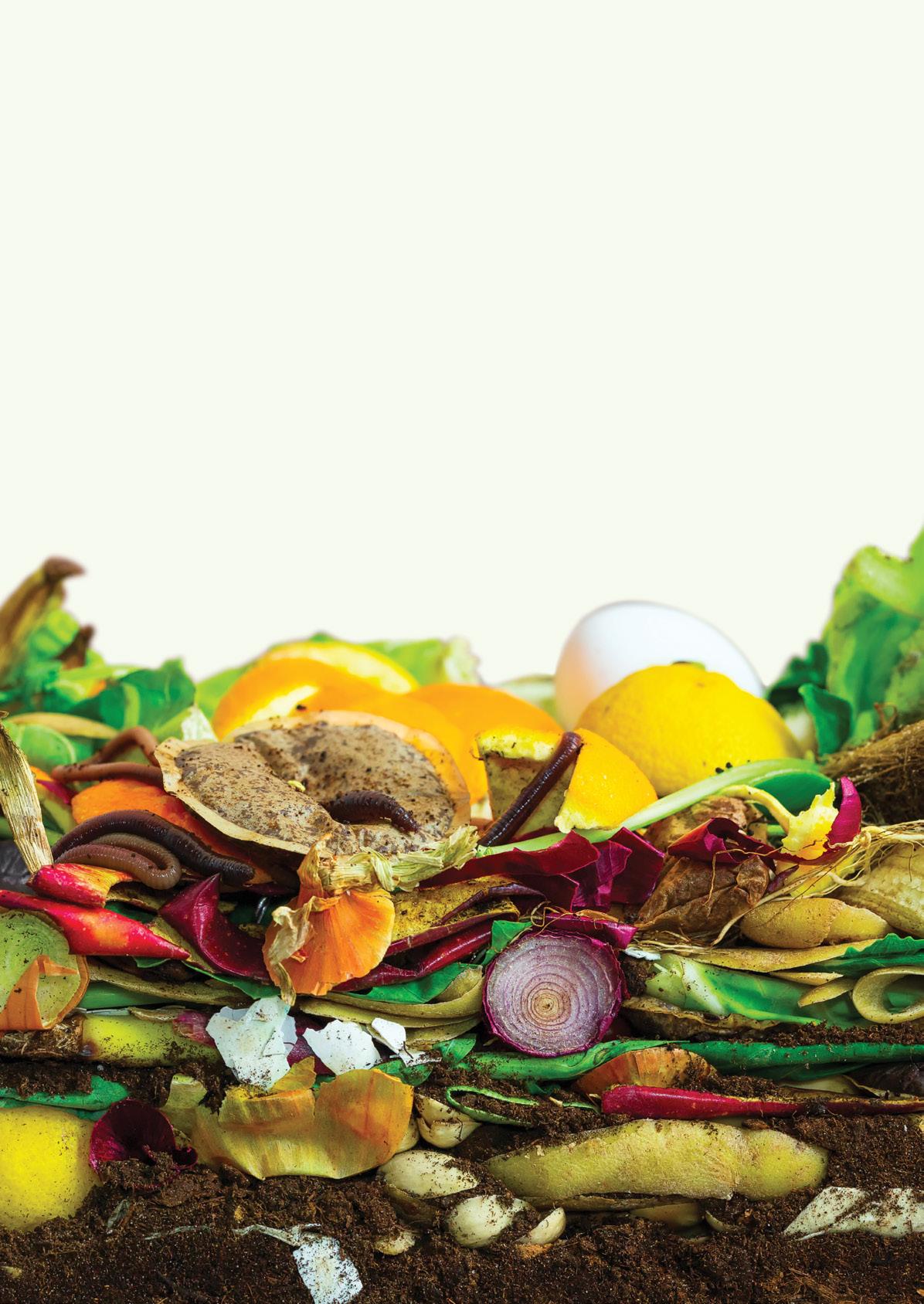
5 minute read
Sustainable food trends
THE FOOD WE WASTE NOW WILL POLLUTE THE ENVIRONMENT FOR GENERATIONS TO COME.
Avoidable food waste is estimated to cost the Australian economy around $20 billion each year.
Advertisement
When we waste food, we also waste all the energy and water it takes to grow, harvest, transport, and package it. We also take away the opportunity to donate it to people in need. But wasted food isn't just a social or humanitarian concern, it's an environmental one.
When food breaks down in landfill, it generates methane — a greenhouse gas that’s 25 more powerful than carbon dioxide and a major cause of climate change. But while we are all trying our best to reuse, recycle and reduce, the reality is - when it comes to the foodstuff we throw away - there is ample room for improvement. And that’s putting it conservatively.
According to sustainable food website Foodwise, Australians discard up to 20% of the food they purchase, equating to one of every five bags of groceries purchased.
This means we throw out an average of $8 billion worth of edible food every year! When broken down this means each household is producing around 345kg of food waste each year. That’s literally about the same weight as three average size fridges!
Of this food waste: – 33% ($2.67 billion) is fresh food – 27% ($2.18 billion) is leftovers – 15% ($1.17 billion) is packaged and long-life products – 9% ($737 million) is drinks – 9% ($727 million) is frozen food – 7% ($566 million) is takeaways
For strata dwellers who don’t have access to composting bins or worm farms, there are still options available for us. Many local and state governments have been making moves to reduce this waste.
New South Wales
The City of Sydney council is doing its bit to ensure its residents are being more mindful about the volume of food being wasted. In July 2019 the City of Sydney issued 53 inner city apartment blocks with a small kitchen caddy to begin recycling their food scraps.
Each strata resident involved in the trial was provided with a small kitchen caddy to store food scraps, an initial supply of compostable caddy liners and a food scraps bin to be placed on the kerb for pick-up. The waste is eventually converted to green electricity and a nutrient-rich sludge that is dried and granulated to produce nutrient-rich fertiliser.
In September 2020 the trial project was extended to include an additional 99 apartment buildings across the city. Such is the popularity of this project that organisers are now looking to mine the waitlist to add a further 150 apartment buildings. The initiative is part of NSW’s Leave nothing to waste – waste strategy and action plan 2017–2030, which hopes to achieve a zero-waste target by 2030.
The city council, in partnership with the state government, has also launched Love Food Sydney, a free online program with tools and tips on how to cut down food wastage, save money and reduce your impact on the environment.

Queensland
The average Brisbane household generates 460kg of domestic waste each year. Food waste accounts for 20% of this waste. Interestingly, the top 10 foods that Brisbane residents throw in the bin are: bread, bananas, broccoli, oranges, watermelon, apples, pumpkin, onion, corn and potatoes.
To help reduce the amount of food waste going to landfill, the Brisbane City Council (BCC) offers its residents access to a number of free compost and worm farm workshops and events. In addition, BCC has partnered with a number of community gardens around the city to help residents turn kitchen scraps into nutrients for soil.
The program encourages residents living near community composting hubs to regularly contribute their kitchen scraps to a community garden compost bin. To help strata residents collect and transport scraps to their local composting hub, registered participants are given access to a free kitchen caddy from their local ward office.

Victoria
Each year Victorian households send over 250,000 tonnes of edible food waste to landfill. That’s enough to fill Melbourne’s Eureka Tower… which is no easy feat! This is one of the world’s tallest residential building, boasting the highest public viewing platform in the Southern Hemisphere at 300m high.
Not only does this present a significant financial loss for households, it also has a massive impact on our environment. So, given the average Victorian home is throwing away almost $42 per week - which equates to over $2,100 a year - in discarded food, the Victorian state government has partnered with Sustainability Victoria to launch its campaign, Love Food Hate Waste.
This campaign is based on the successful UK program of the same name. It offers residents tips on reducing household food waste to raise awareness of avoidable food wastage.
South Australia
In South Australia as much as 40% of the material in household waste bins sent to landfill is food and organics. This could be diverted by using the green bin for composting. And we know that less waste to landfill is not only good for the environment, but the Australian Government says it’s good for the economy.
SA Minister for Environment and Water said more than three times as many jobs could be created for every tonne of waste recycled or reused instead of going to landfill. Food waste recycling saves councils money by reducing landfill costs. Food waste could be diverted into the green bin for composting rather than going in the waste bin.
The South Australian government also promotes a low waste, local food movement. Through its partnership with the Adelaide Sustainability Centre, it offers guidance on what strata residents in the state can do to “maximise menus and minimise waste”.
Adelaide is also home the $132 million Fight Food Waste Cooperative Research Centre (CRC) whose aim is to work to find ways to reduce food waste in Australia, as well as the associated landfill and social issues.
So what part can we play in reducing the amount of food and waste heading to landfill? A good place to start is to check with your local council what initiatives they have available for residents. And consider what you buy and whether you need it. Saving money and the planet just makes sense for generations to come.

Links to Sustainable Food in your State








